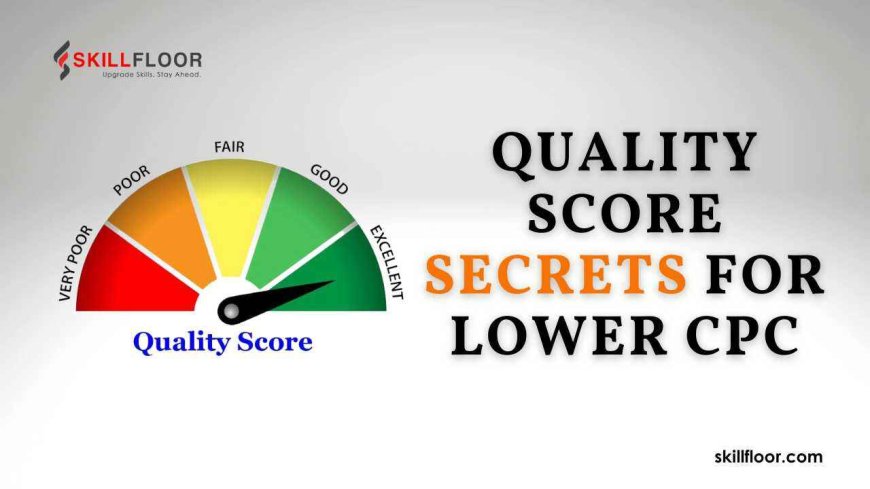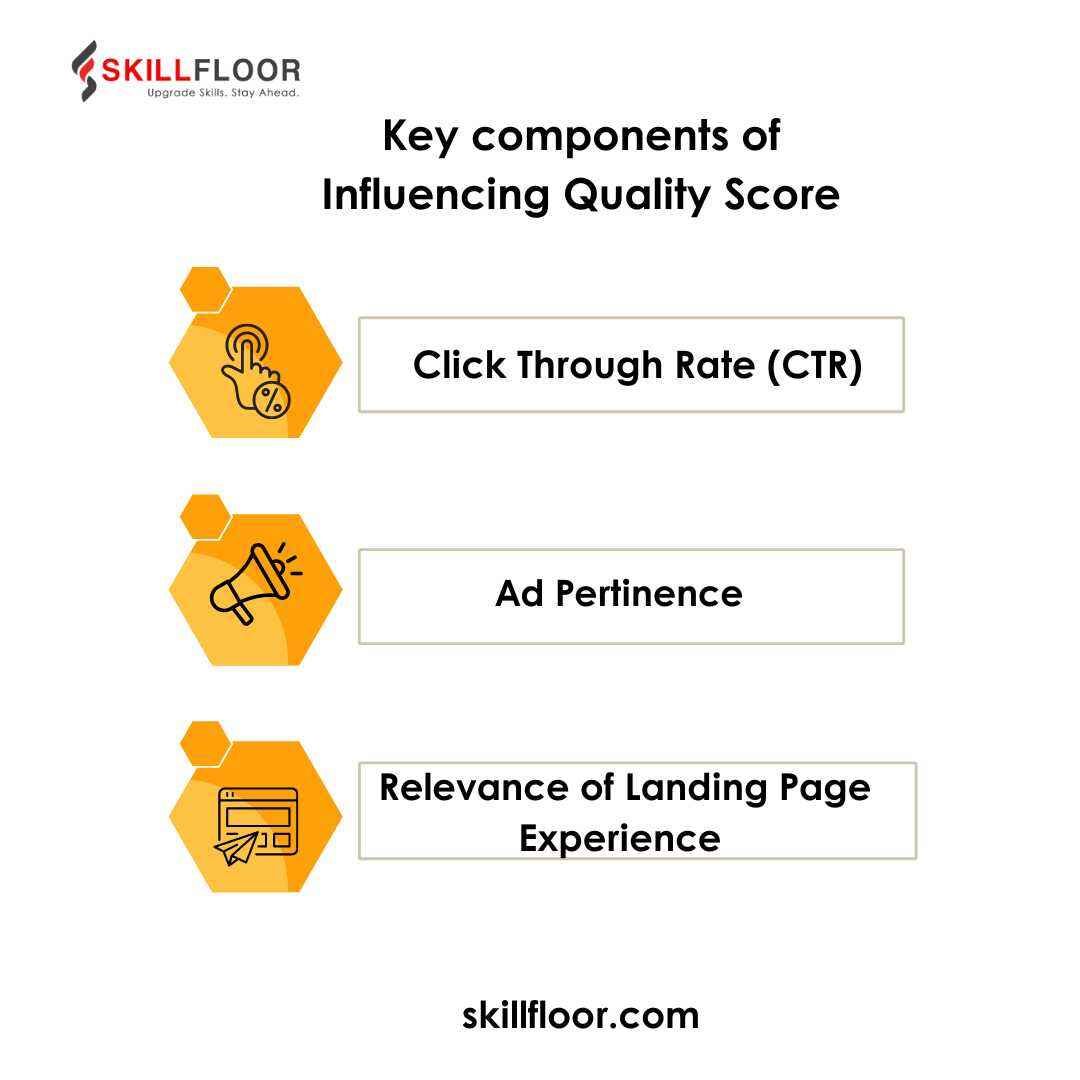How Quality Score Affects Your Cost per Click
Discover how Quality Score impacts your cost per click (CPC) in digital marketing and optimize your campaigns for better ROI.

Any marketer has to understand the complicated world of digital advertising, particularly when it comes to effectively managing cost per click. We'll dive into "How Quality Score Affects Your Cost per Click" in this blog post to look at its effects on your advertising budget. In Google's ad bidding system, Quality Score is an important metric that establishes the relevance and usefulness of your ads to users. Your campaigns may become more affordable as a result of a lower Cost per Click based on a greater Quality Score. On the other hand, a lower Quality Score can put a strain on your budget by raising your Cost per Click. You can improve your Quality Score and, consequently, obtain a more advantageous Cost per Click by improving elements like click-through rate (CTR), ad significance, and landing page experience. Gaining this knowledge can greatly increase your overall return on investment (ROI) and increase the success of your digital marketing campaigns.
Understanding Cost per Click (CPC)
Let's start by discussing cost per click (CPC). The Cost Per Click (CPC) measure displays the amount you pay for each click on your advertisement. It's an essential part of pay-per-click (PPC) advertising and has a big impact on your marketing strategy and advertising budget. More clicks that you can afford to get more potential clients to your website when your cost-per-click (CPC) is lower.
What is a Quality Score?
A Quality Score is a ranking that Google gives to your ads, keywords, and landing pages based on their quality and relevancy. On a scale of 1 to 10, 10 representing the highest, it is measured. Google uses this score to make sure that when consumers search for particular terms, they see relevant, high-quality adverts. The following variables affect the Quality Score:
-
Click-Through Rate (CTR): The percentage of users that view your advertisement and click on it.
-
Ad Relevance: Your ad's level of relevance to the keyword.
-
Experience on Landing Pages: The quality, relevancy, and ease of use of the landing page that the advertisement directs users to.
The Relationship Between Quality Score and Cost per Click
So what impact does Quality Score have on your CPC? To put it simply, your CPC will decrease as your Quality Score increases. Google wants to give users the greatest possible search experience, therefore they reward high-quality ads with lower click-through rates. This is how it operates:
-
Ad Rank: Your ad's ranking on the search results page is based on its Ad Rank, which is computed by taking the product of your maximum bid and your Quality Score.
-
Lower Costs: The cost per click is lowered when your quality score is better. This implies that, in comparison to a rival with a lower Quality Score, you will spend less for each click if your landing pages and advertisements are extremely relevant to your target market.
Factors Influencing Quality Score
Your Quality Score is influenced by multiple things. Let's dissect the key components:

1. Click Through Rate (CTR)
Historic CTR: Your Quality Score may be impacted by the prior effectiveness of your advertisements. A higher score is often indicative of a higher historical CTR.
Expected CTR: Using historical data and the current context, search engines estimate the likelihood that users will click on your advertisement.
2. Ad Pertinence
Keywords: Make sure your keywords are aligned with the content of the advertisement.
Ad Copy: Write enticing copy for your ads that is consistent with the search queries' intent.
3. Relevance of Landing Page Experience
The information on your landing page needs to be pertinent to the keywords and advertisement.
Strategies to Improve Quality Score and Lower CPC
Now that you understand the factors influencing Quality Score, let's examine some practical methods to raise it and, as a result, reduce your Cost per Click.
-
Conduct Thorough Keyword Research: To identify pertinent terms with high search volumes and little competition, use resources like Google Keyword Planner.
-
Create advertising with Strong Calls to Action (CTA): Write brief, simple advertisements with a compelling call to action.
-
Optimize Landing Page Performance: Make sure the landing pages are optimized for mobile devices, load quickly, and have a strong correlation with the keywords and ad copy.
-
Use Ad Extensions To improve your ads and provide users more value, employ callout extensions, site link extensions, and other ad extensions.
-
A/B Testing: Test several ad variations frequently to determine which ones work best, then use data to inform your decisions to optimize your ads.
-
Monitor and Adjust Bids: To make sure you're receiving the best CPC possible, monitor and modify your bids in response to performance.
Benefits of a High-Quality Score
Having a high-quality Score for your advertising campaigns has many advantages. The following are some of the main benefits:
1. Reduced Click-Through Rate
Since a higher Quality Score frequently translates into a cheaper Cost per Click, you can acquire more clicks for the same amount of money.
2. Improved Placement of Ads
Quality-scored ads have a better chance of ranking at the top, increasing visibility, and generating more clicks.
3. Enhanced Return on Investment
You may increase the return on investment for your ad expenditure by obtaining higher ad positions and spending less for clicks.
4. Improved User Experience
Because they show that your landing pages and advertisements are pertinent and helpful to consumers, high-quality scores are frequently correlated with better user experiences.
5. An edge over competitors
By enabling you to obtain better results at a reduced cost, a high-quality Score might provide you with a competitive advantage over other advertisers.
understanding and improving your Quality Score is essential for effectively managing your Cost per Click. Better ad placements, reduced CPCs, and more return on investment can be attained by concentrating on important elements including click-through rate, ad relevancy, and landing page experience. This gives you a competitive edge in digital marketing efforts and optimizes your advertising budget while also improving user experience.




























































